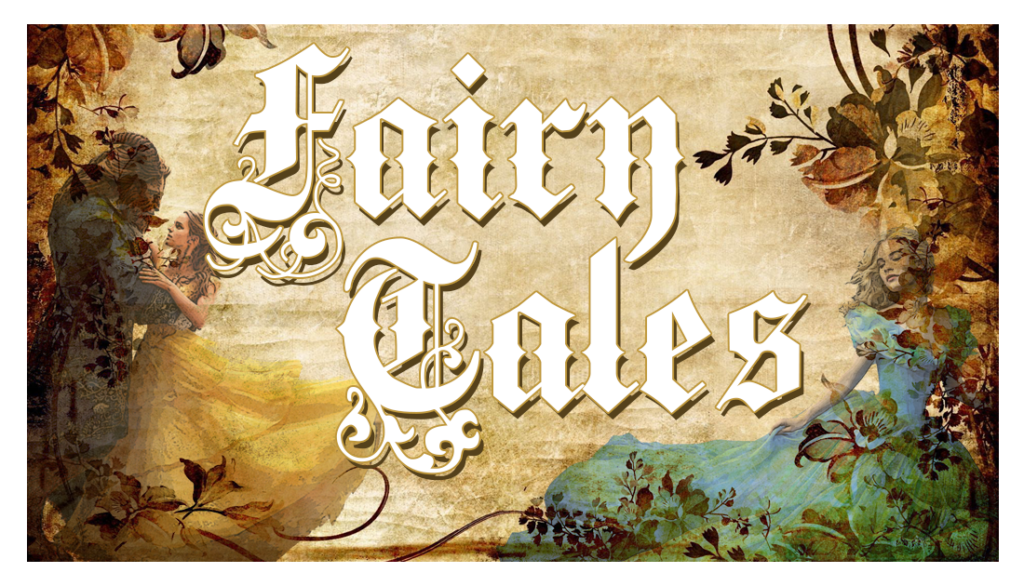Table of Contents
NEW TAKES ON FAIRY TALES
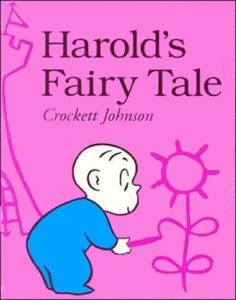 |
In Crockett Johnson’s Harold’s Fairy Tale (HarperCollins, 2004), Harold, armed with his magic purple crayon, draws himself a bedtime fairy tale that begins with an enchanted garden and ends with a flying carpet. For ages 3-6. |
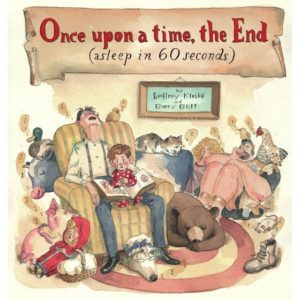
|
Geoffrey Kloske’s Once Upon a Time, The End (Atheneum Books for Young Readers, 2005) is a collection of very short, very fractured fairytales read by an exhausted father who just wants his perky toddler to go to sleeps. First he abbreviates the tales (the Three Little Pigs, for example, are reduced to two); then he introduces sleep themes. “The Princess and the Pea” winds up with “Is there a pea under your bed? Then what’s your excuse? Go to bed.” Funny and clever for ages 3-8. |
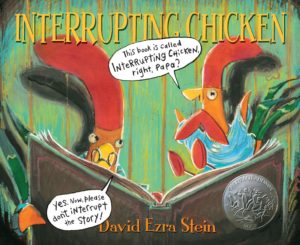
|
Who hasn’t wanted to shout “DON’T GO THERE!” when a favorite fairy-tale character is about to make a fatal mistake? In David Ezra Klein’s Interrupting Chicken (Candlewick, 2010), a patient father rooster (in spectacles and carpet slippers) tucks his offspring, a little red chicken, into bed and attempts to read a bedtime story – only to be continually interrupted by his daughter, who can’t bear the impending doom. “Out jumped a little red chicken,” she cries, as her father reaches a crucial point in Hansel and Gretel, “and she said ‘DON’T GO IN! SHE’S A WITCH!’ So Hansel and Gretel didn’t. THE END!” Finally the little red chicken embarks on a story of her own, only to be interrupted by her tired father’s snores. For ages 3-8. |
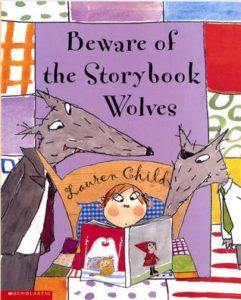
|
In Lauren Child’s Beware of the Storybook Wolves (Scholastic, 2000), Herb loves a wolfish bedtime story – he’s particularly fond of Little Red Riding Hood – but he always makes his mother take the book out of his bedroom before he goes to sleep. One night she forgets – and out of the pages pops a pair of storybook wolves, looking for a meal of little boy. Herb manages to vanquish them, with the help of a luckily placed fairy-tale anthology featuring a fairy godmother. For ages 4-8. |
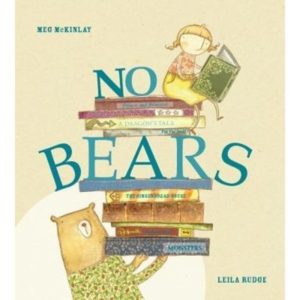
|
Little Ella is in charge of Meg McKinlay’s witty and delightful No Bears (Candlewick, 2012) and she has strong opinions about what makes a good fairy tale: princesses, fairy godmothers, giants, and even monsters are fine, but there must be NO BEARS. Leila Rudge’s illustrations tie in a host of interested fairy-tale characters. Including a helpful bear. For ages 4 and up. |
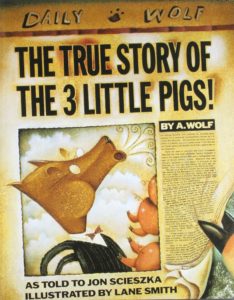
|
According to Jon Scieszka’s The True Story of the Three Little Pigs (Puffin, 1996), the Wolf – Alexander T. Wolf, that is – has been wronged: he only wanted to borrow a cup of sugar from the pigs to make his grandmother a birthday cake. And all the huffing and puffing? He had a cold. For ages 4 and up. |
| For more versions of the Three Little Pigs, see Perfect Pigs. | |
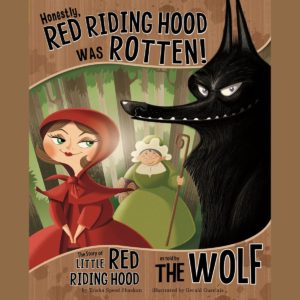
|
Trisha Speed Shaskan’s Honestly, Red Riding Hood Was Rotten! (Capstone/Picture Window Books, 2011) lacks the charm and pizzazz of Scieszka’s The True Story of the Three Little Pigs, but similarly turns a traditional tale on its head. Here, the wolf is a vegetarian, but he’s starving, and Red Riding Hood and her grandma look suspiciously like apples. Other titles in the series include Shaskan’s Seriously, Cinderella Is So Annoying, Nancy Jean Loewen’s Believe Me, Goldilocks Rocks!, and Eric Mark Braun’s Trust Me, Jack’s Beanstalk Stinks! For ages 5 and up. |
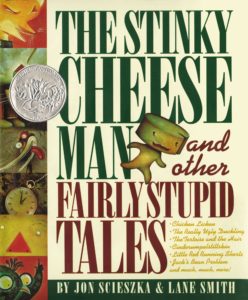
|
Jon Scieszka’s The Stinky Cheese Man and Other Fairly Stupid Tales (Viking Juvenile Books, 1992) is a collection of comic, confused, and unconventional takes on traditional fairy tales, among them “The Princess and the Bowling Ball,” “The Really Ugly Duckling,” “Little Red Running Shorts,” and “Jack’s Bean Problem.” For ages 5 and up. |
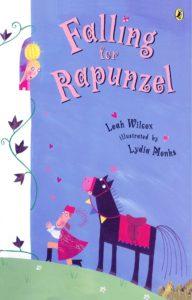
|
In Leah Wilcox’s Falling for Rapunzel (Puffin, 2005), illustrated with wonderful paper-and-paint collages, Rapunzel is actually weeping over a bad hair day, but the prince believes that she’s a prisoner longing to be freed. Unfortunately her tower is so high that she can’t hear what he’s shouting up to her – so when asked to throw down her hair, she instead pitches out underwear. The frustrated prince embarks upon a list of other possibilities, all in vain – asked for locks, he gets socks; for tresses, dresses; for rope, cantaloupe; and for a ladder, pancake batter. Finally, desperate, he shouts “Throw down your braid!” Rapunzel promptly tosses out her maid – with whom the prince falls in love and off they ride to live happily ever after. A fractured fairy tale with a touch of Amelia Bedelia. For ages 4-8. |
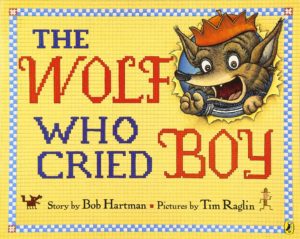
|
In Bob Hartman’s The Wolf Who Cried Boy, Little Wolf complains endlessly about the family diet of Lamburgers, Sloppy Does, Three-Pig Salad, and Chocolate Moose – he’d like to eat Boy. So he embarks upon a clever plan: he shouts “Boy! Boy!” – causing his parents to leave the house and spend the evening searching for the elusive boy. After two nights of this, Little Wolf’s parents catch on to his ploy and agree to ignore him for the evening. Unfortunately for Little Wolf, that very night an entire Boy Scout troop hikes through the woods. For ages 4-8. |
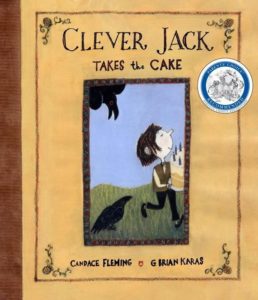
|
In Candace Fleming’s Clever Jack Takes the Cake (Schwartz & Wade, 2010), poor Jack – invited by mistake to the princess’s tenth birthday party – decides to bake her a cake, a wonderful confection topped by an enormous strawberry. En route, however, after run-ins with four-and-twenty blackbirds, a troll, a spooky dark forest, a hungry bear, and a strawberry-snatching palace guard, not a crumb is left. Instead, Jack tells the princess the exciting story of his adventure – which the princess, bored silly with gifts of tiaras, pronounces the very best present of all. For ages 5-8. |
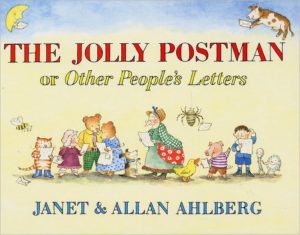
|
Janet and Allan Ahlberg’s The Jolly Postman (Little Brown, 2001) is a wonderful collection of letters by and to nursery-rhyme and fairy-tale characters, all right there in the book, in addressed envelopes. Goldilocks writes a letter of apology to the Bears and invites Baby Bear to her birthday party; the Wicked Witch (of Gingerbread Cottage, The Woods) gets a flier from Hobgoblin Supplies, Ltd., offering a great deal on Little Boy Pie Mix; the Big Bad (B.B.) Wolf gets a snappy letter from Little Red Riding Hood’s attorney. Delightful for all ages. |
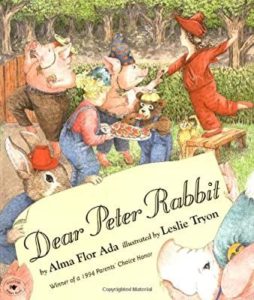
|
In Alma Flor Ada’s Dear Peter Rabbit (Atheneum Books for Young Readers, 2001), written as a series of letters among storybook characters, Pig One invites Peter Rabbit to a housewarming party, Baby Bear invites Goldilocks (here surnamed McGregor) for a visit and offers chocolate cake; Goldilocks mentions her father’s missing vegetables and his find of a tiny pair of shoes left behind in the garden. The illustrations, in pen and ink and watercolor, are filled with charming details. In the same format, also see Ada’s Your Truly, Goldilocks and With Love, Little Red Hen. For ages 5-8. |
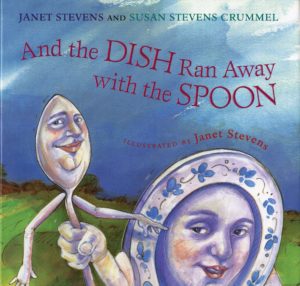
|
In Janet Stevens’s And the Dish Ran Away With the Spoon, it’s the end of “Hey diddle diddle:” the Dish and the Spoon seem to have absconded permanently. Their absence is discovered by the fiddle-playing cat who, horrified, shouts, “EVERYBODY UP! They didn’t come back!” Cat, Dog, and Cow, as they struggle to find their missing friends and put their rhyme together again, run into helpful (or not-so-helpful) fairy-tale and nursery-rhyme characters, among them Little Boy Blue, the Big Bad Wolf, and Miss Muffet’s spider. The illustrations are filled with hilarious details (check out the lamb suit hanging on the Wolf’s coat rack). For ages 5-9. |
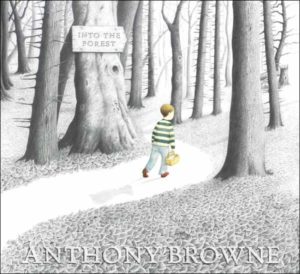
|
In Anthony Browne’s Into the Forest (Walker Books, 2005), a little boy wakes to a horrific thunderstorm. In the morning his father has disappeared and his mother has no idea when he will return. His mother then sends the worried boy off with a basket for his sick grandmother, but warns him to take the long way around, not the shortcut through the forest. He takes the shorter path anyway – and finds himself in a creepy wood, filled with fairy-tale imagery, where he meets assorted classic characters, among them a sobbing Hansel and Gretel, Jack (trying to sell a cow), and a hungry Goldilocks, and finds a red coat hanging from a tree. By the time he reaches his grandmother’s house, anxiety is at a peak, made more so by the sound of a seemingly strange voice (wolf?) behind the door – but all is well; his grandmother is better; his father is there; and together father and son go happily home. For ages 6-10. |
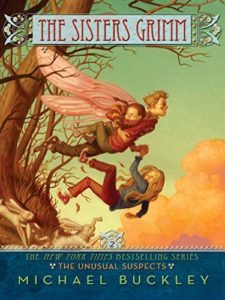
|
Michael Buckley’s Sisters Grimm series follows the adventures of sisters Sabrina and Daphne, ages 11 and 7, modern-day descendants of the famous Brothers Grimm, who have been sent to live with their grandmother and her companion, the mysterious Mr. Canis, in Ferryport Landing. It turns out that Ferryport Landing is a far-from-usual town, populated by fairy-tale characters known as Everafters. In the first of the series, The Fairy Tale Detectives (Amulet/Abrams, 2005), a giant is on the rampage, and the girls – with the help of a Magic Mirror, a flying carpet, the devilish Puck, and Jack, of Beanstalk fame – must stop him. There are many sequels. For ages 7-12. |
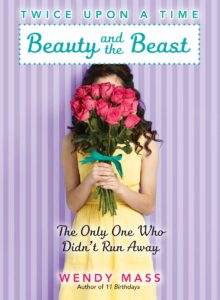
|
In Wendy Mass’s clever and funny Twice Upon a Time series, classic fairytales get catchy updates. Try this from Mass’s Rapunzel, the One With All the Hair (Scholastic, 2012): “5th of Augustus. I seriously CANNOT BELIEVE what has happened to me today. I am currently throwing a tantrum on the pile of straw that is supposed to serve as my bed (!) and – this is the most unbelievable part – I am LOCKED IN A TOWER IN THE MIDDLE OF THE FOREST!!” Other titles are Sleeping Beauty, the One Who Took a Really Long Nap and Beauty and the Beast, the Only One Who Didn’t Run Away. Great chapter books for ages 8-12. |
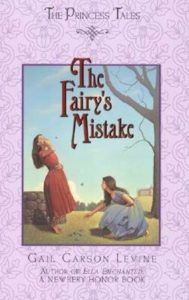
|
The books in Gail Carson Levine’s Princess Tales series are all out-of-the-ordinary takes on classic fairy tales, among them The Fairy’s Mistake (HarperCollins, 1999), a play on Charles Perrault’s “Diamonds and Toads;” The Princess Test, a twist on “The Princess and the Pea;” and Princess Sonora and the Long Sleep, an unexpected version of “Sleeping Beauty.” For ages 8-12. |
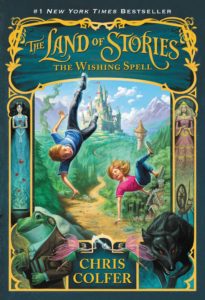
|
In Chris Colfer’s The Land of Stories: The Wishing Spell (Little, Brown, 2012), twins Alex and Connor are given a magical book for their twelfth birthday that acts as a gateway, sending them into the world of fairy-tale characters – though this is an after-the-tale-type world, in which Cinderella, Sleeping Beauty, and Snow White are all married to their Prince Charmings; Cinderella is pregnant; and Goldilocks, grown up, is now a fugitive who rides a horse named Porridge. The kids embark on a quest to collect eight magical items that will allow them to activate the Wishing Spell and return home. For ages 8-12. |
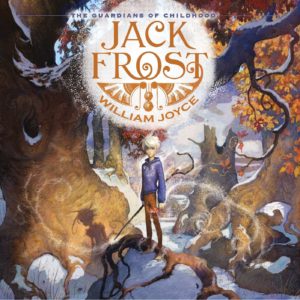
|
William Joyce’s Guardians of Childhood series explains the surprising origins of such childhood icons as Nicholas St. North (an ex-bandit and wizard’s apprentice), E. Aster Bunnymund (a pooka rabbit, inventor of Spring, jokes, chocolate, and Australia), Jack Frost, and Toothiana, Queen of the Tooth Fairy Armies (Atheneum Books for Young Readers, 2012), tiny, green-winged, and fierce. For ages 9-11. |
| For more information, illustrations, and excerpts, see The Guardians of Childhood website. | |
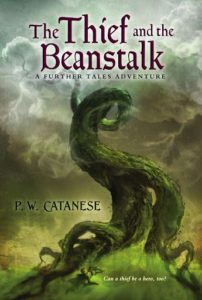
|
P.W. Catanese’s Further Tales series books are exciting villain-and-battle-filled sequels to classic fairytales. The Thief and the Beanstalk (Aladdin, 2005), for example, involves an orphan named Nick, a gang of ruffians, a lonely castle, and a giant invasion; The Brave Apprentice, a sequel to “The Brave Little Tailor,” features Patch, a young tailor’s apprentice, and a troll war; and The Eye of the Warlock, an extension of “Hansel and Gretel,” pits young Rudi and friends against Vilikus, an evil warlock, and his army of amphibian murglins. For ages 9-12. |
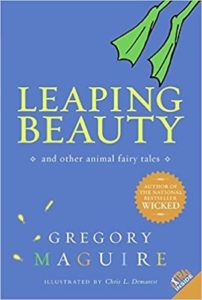
|
Sleeping Beauty as a frog? Cinderella as an elephant? Gregory Maguire’s Leaping Beauty and Other Animal Fairy Tales (HarperCollins, 2006) retells eight fairy tales, recasting the characters as animals. For ages 9-13. |
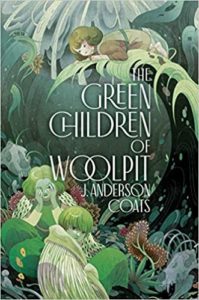 |
Based on an old English legend, J. Anderson Coats’s The Green Children of Woolpit (Atheneum, 2019) tells the story of 12-year-old Agnes who saves two strange green children from a wolf trap – and then becomes embroiled in a plot involving the world of fairies. A creepy and fascinating read for ages 10 and up. |
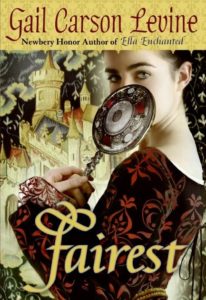
|
By Gail Carson Levine, Fairest (HarperCollins, 2008) is the story of Aza, homely, but born with a talent for singing and ventriloquism. The message of this Snow White tale is that beauty isn’t everything. For ages 11 and up. |
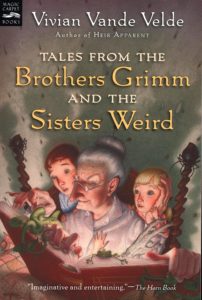
|
“How to Fracture a Fairy Tale,” reads the list on the back of Vivian Vande Velde’s thoroughly fractured Tales from the Brothers Grimm and the Sisters Weird (Sandpiper, 2005): 1. Make the villain a hero. 2. Make the hero a villain. 3. Tell what really happened. 4. All of the above.” In this collection of twisted tales, Rumplestiltskin is a kindly elf from a parallel universe, whom the miller’s daughter much prefers to the greedy king; Beauty likes the Beast better as a beast; and Hansel and Gretel, rather than innocent babes in the wood, are positively evil. For ages 9-13. |
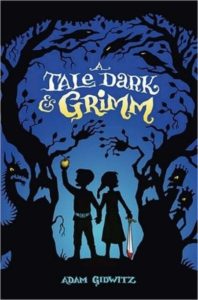
|
The stories in Adam Gidwitz’s A Tale Dark and Grimm (Puffin, 2011) are – well, awesome – though occasionally in a gruesome sort of way, for which readers get fair warning from intercalated comments from the author. The connecting thread is protagonists Hansel and Gretel (twins) who serve to tie together eight delightfully gruesome Grimm tales. The action continues, via Jack and Jill, in In a Glass Grimmly. For ages 9-13. |
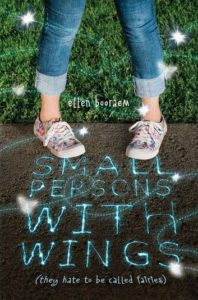
|
In Ellen Booraem’s Small Persons With Wings (Puffin, 2012), Mellie Turpin, in kindergarten, boasted to the other kids about Fidius, the tiny opalescent-winged fairy who slept on her pillow. When she was unable to produce Fidius at show-and-tell, her classmates made her life miserable. Now she’s thirteen; her parents have inherited a falling-down inn from her grandfather; and Mellie is looking forward to a new fairy-free life in a new town. What she discovers is that the new house is infested with fairies and her family is entrusted with a magical moonstone and a fairy pact that dates back to the time of Charlemagne. For ages 10-13. |
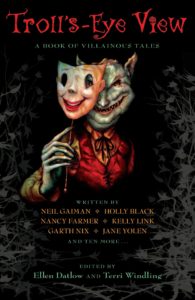
|
Edited by Ellen Datlow and Terri Windling, Troll’s-Eye View: A Book of Villainous Tales (Firebird, 2010) is a collection of fairy-tale variants by such authors as Neil Gaiman, Peter Beagle, Garth Nix, Kelly Link, and Nancy Farmer. For ages 11 and up. |
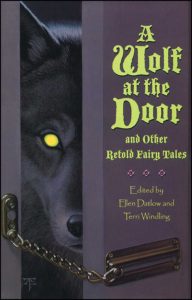
|
Datlow and Windling have also collaborated on several adult collections of alternative fairy tales and on two other collections for young people: A Wolf at the Door and Other Retold Fairy Tales (Aladdin, 2001) and Swan Sister (Aladdin, 2005). |
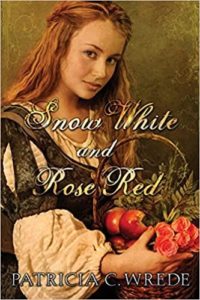
|
In Patricia Wrede’s Snow White and Rose Red (Firebird, 2009), sisters Blanche and Rosamunde live with their herbalist mother on the border of Faerie, where Doctor John Dee – astrologer to Queen Elizabeth I – and his friend Ned Kelly, the villains of the piece, are attempting to seize the magic power of Faerie for themselves. Their machinations result in Hugh, son of the Queen of Faerie, being turned into a bear. For ages 12 and up. |
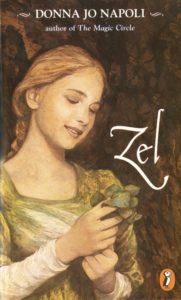
|
Donna Jo Napoli has written a number of fairy-tale-based novels, in which psychological depth, complexity, and occasional role reversal are added to familiar stories, often turning them startlingly on end. The Magic Circle (Puffin, 1995) is a twist on the tale of Hansel and Gretel; Zel (Dutton Juvenile Books, 1996), a.k.a. Rapunzel, is a beloved child whose mother imprisons her in a tower since she can’t bear the thought of her daughter leaving home; and Crazy Jack (Delacorte Books for Young Readers, 1999) is a version of Jack and the Beanstalk enhanced by a romance with a neighbor’s daughter and a lesson on the perils of materialism. In Spinners (Puffin, 2001), a young tailor cripples himself spinning straw into gold on a magic wheel in hopes of winning the hand of his (pregnant) beloved – whose father gives her instead to a wealthy miller. (The tailor earns the sobriquet “Rumpelstiltskin;” his loved one dies bearing their daughter, who grows up to be a talented spinner.) Beast (Simon Pulse, 2004) begins in Persia, and explains how the Beast became a Beast. For ages 12 and up. |
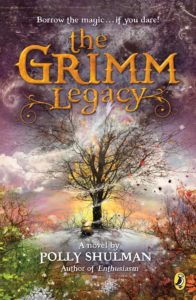
|
In Polly Shulman’s The Grimm Legacy (Puffin, 2011), teenaged Elizabeth takes a job as a page at the New York Circulating Materials Repository – a lending library of historical artifacts, including the marvelous Grimm Collection, filled with such items as mermaid combs, Seven-League boots, winged sandals, bottled genies, and a particularly nasty Magic Mirror. When items from the Collection start disappearing, Elizabeth and friends set out to catch the thief and end up embroiled in a dangerous quest. For ages 12 and up. |
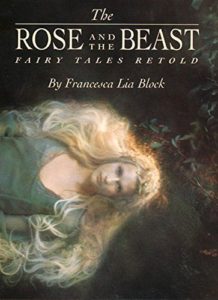 |
By Francesca Lia Block – author of Weetzie Bat – The Rose and the Beast (HarperTeen, 2001) is a fascinating retelling of nine classic fairy tales (each given a one-word title: “Snow,” “Tiny,” “Glass,” “Wolf,” “Rose”) in modern California settings. For ages 12 and up. |
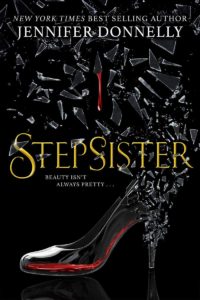 |
By Jennifer Donnelly, Stepsister (Scholastic, 2019) is the story of Cinderellas’s stepsisters – the warrior-like Isabelle and the intellectually brilliant Octavia – and the battle between Chance and the Fates to see how they’ll fulfill their destinies. A wonderful read for ages 12 and up. |
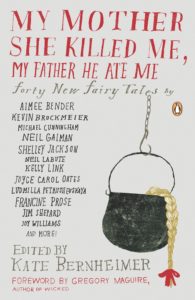
|
Edited by Kate Bernheimer, My Mother She Killed Me, My Father He Ate Me (Penguin Books, 2010) is a collection of forty new fairy tales by modern authors, among them Michael Cunningham, Joyce Carol Oates, Neil Gaiman, Kelly Link, and Karen Joy Fowler. Included are new and very different takes on such classics as Bluebeard, Snow White and Rose Red, The Juniper Tree, Hansel and Gretel, Cinderella, and Jack and the Beanstalk. For older teenagers and adults. |
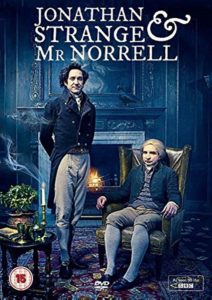
|
In Susanna Clarke’s dense, Dickensian, and fascinating Jonathan Strange & Mr. Norrell (Tor Books, 2006), set during the Napoleonic Wars, the title characters are the last two magicians in England. Characters include some truly eerie fairies. Over 1000 pages long; for older teenagers and adults. |
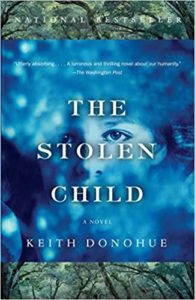
|
The protagonist of Keith Donohue’s The Stolen Child (Anchor Books, 2007) is a changeling. Henry Day – now known as Aniday – was taken from his family when he was seven by a feral gang of hobgoblins, and an imposter left in his place. The book juxtaposes the stories of the pair: Aniday, who has morphed into an ageless creature living in the forest; and “Henry,” who grows up to be a pianist, haunted by memories of another life. A shivery interpretation of fairy legends for older teenagers and adults. |
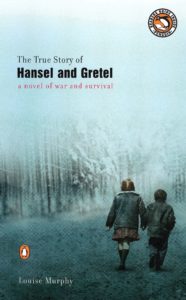
|
Louise Murphy’s The True Story of Hansel and Gretel (Penguin, 2003) is a wrenching tale set in the Holocaust: two Jewish children, ages 11 and 7, are abandoned in the Polish woods by their father and stepmother. Renamed Hansel and Gretel, they are taken in by Magda, a Romani “witch” who is determined to save them from the Nazis. For older teenagers and adults. |
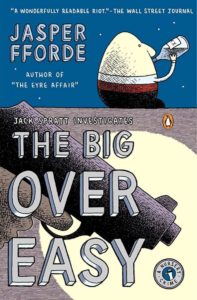 |
Jasper Fforde’s The Big Over Easy (Penguin Books, 2006) is a fairy-tale spoof on crime fiction: detectives Mary Mary and Jack Spratt of the Nursery Crimes Division investigate the death of Humperdinck Dumpty (found shattered; he fell – or was he pushed? – off a wall). For teens and adults. |
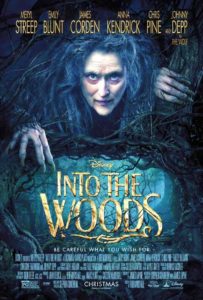
|
In Stephen Sondheim’s prize-winning musical Into the Woods (2014), which premiered on Broadway in 1987, the plot entangles characters from such classic Grimm fairy tales as Little Red Riding Hood, Jack and the Beanstalk,, Rapunzel, and Cinderella, as a baker and his wife search for magic objects to lift the curse that has made them childless. A fractured fairy tale with a dark side. Rated PG. |
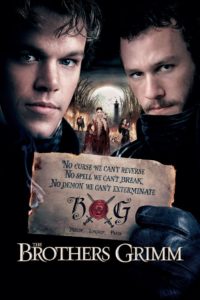
|
Terry Gilliam’s film The Brothers Grimm (2005), starring Matt Damon and Heath Ledger as Wilhelm and Jacob, is set in the early 1800s in French-occupied Germany, where the duplicitous brothers travel from town to town pretending to rid the populace of supernatural creatures. Then they encounter a genuine magical mystery and an enchanted forest filled with fairy-tale characters. Too spooky for the very young. Rated PG-13. |
| From the Internet Movie Database, see The Best Fairytale Movies and TV Series for an annotated list, from The Wizard of Oz (1939), Snow White and the Seven Dwarfs (1937), and Cinderella (1950) to Tangled (2010) and Puss in Boots (2011). | |
| Marilyn Kinsella’s Fractured Fairy Tales has suggestions for writing fractured tales, a bibliography of fractured stories, and a helpful teacher’s guide. |
